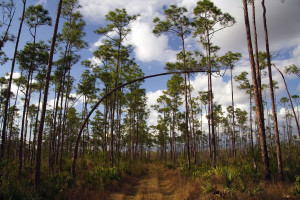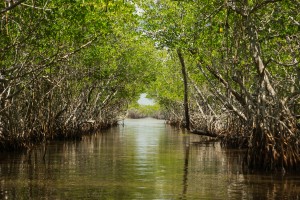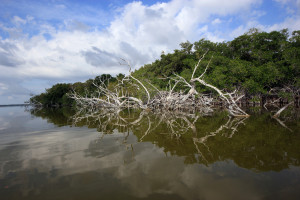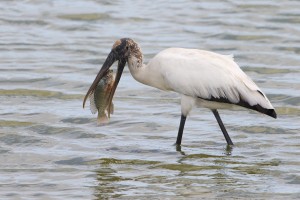 In a blog post last week, we discussed two different ecosystems in the Everglades: mangroves and coastal lowlands. Those are just two of many of the ecosystems within the Everglades.
In a blog post last week, we discussed two different ecosystems in the Everglades: mangroves and coastal lowlands. Those are just two of many of the ecosystems within the Everglades.
Each ecosystem looks and acts different and helps the circle of life. On an airboat tour with Captain Mitch, you will fly by many of the Everglades’ ecosystems. For this blog post, we wanted to share some information with you on two more ecosystems in the Everglades.
Pinelands: Pinelands are forests that live in the exposed limestone substrate of south Florida. It’s a rugged terrain with a slash pine canopy. Throughout the pinelands, there is a variety of different flora and endemic species, which only grow in the local area. The pinelands are also known as the pine rocklands. For this ecosystem to thrive, fire is essential. The fires help clear out faster-growing hardwoods that block out light to pine seedlings. The plants in this area are used to frequent fires. The Park uses prescribed fires to mimic the natural pattern of fires to help keep the pinelands alive.
Harwood hammock: Hardwood hammock is a dense area of broad-leafed trees that grow on a natural rise just a few inches. Hammocks can be found in most all ecosystems in the Everglades. Many tropical species like mahogany, gumbo limbo, cocoplum, along with temperate species like live oak, red maple, and hackberry live in hardwood hammocks. Since the plant life is so varied in a hardwood hammock, there are lot’s of wildlife that live their too. Due to the elevation, hardwood hammocks hardly flood. These hammocks are also protected by fire as acids from decaying plants dissolve the limestone around the tree islands that creates a moat. Ferns and airplants are seen throughout hardwood hammocks due to the moisture-filled air and shaded areas.
As you can see, there’s lots of moving parts that make these ecosystems thrive, so it’s important to protect and care for all these different ecosystems as they all play a critical role in the lifecycles of endless plant, animal, and insect species.
Next month, we will discuss about the following ecosystems: freshwater sloughs, freshwater marl prairie, cypress, and marine and estuarine.
Want to see a few different ecosystems up close?
Come on down and enjoy a fun trip out on the water exploring the Everglades on an airboat tour that leaves from Everglades City. Captain Mitch’s Everglades Private Airboat Tours is open 7 days a week from 8:30 a.m. to 4:30 p.m. If paying by cash, adults cost $40 (plus tax) and children 12 and under cost $20 (plus tax. If paying by credit card, adults cost $45 (plus tax) and children cost $25 (plus tax).
To book an airboat trip in the Everglades, call Captain Mitch’s Airboat Tours at 239-695-3377 or click Everglades airboat tour page.
 There are many different ecosystems in the Everglades. In fact, you will fly by many of them on one our airboat tours. For this blog post, we wanted to share some information with you on
There are many different ecosystems in the Everglades. In fact, you will fly by many of them on one our airboat tours. For this blog post, we wanted to share some information with you on  If you’re thinking about coming out on an airboat ride with Captain Mitch, you’ll be spending some time in the Everglades. How much do you know about the Everglades? It’s a beautiful landscape, and ou
If you’re thinking about coming out on an airboat ride with Captain Mitch, you’ll be spending some time in the Everglades. How much do you know about the Everglades? It’s a beautiful landscape, and ou The Everglades is home to thousands of species. We consider ourselves so lucky that airboat rides exist so we can explore the habitat of so many animals, plants, insects, birds, and more. Unfortunately, there are many species who are threatened or endangered in the Everglades.
The Everglades is home to thousands of species. We consider ourselves so lucky that airboat rides exist so we can explore the habitat of so many animals, plants, insects, birds, and more. Unfortunately, there are many species who are threatened or endangered in the Everglades. 





